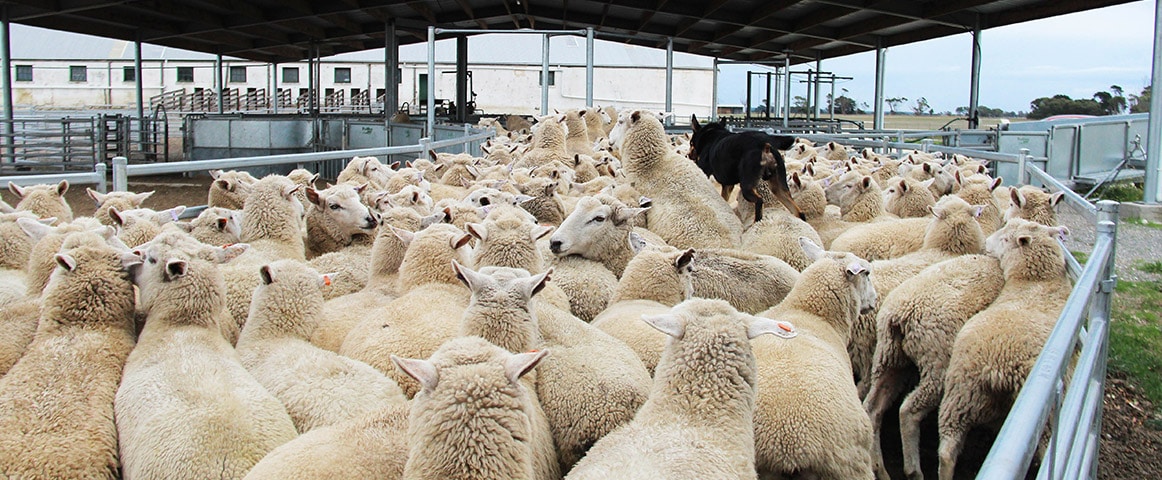Sheep eID – What does it mean for the industry and how can you capitalise on data in your yards?
From January 1st 2017, all sheep and goats born in Victoria will require an electronic identification tag – linked to the National Livestock Identification System (NLIS) – before leaving their property of birth. The core strategy behind the decision is to combat biosecurity threats. Animal traceability and data capture are further eID benefits Victorian producers, sale facilities and supply chain organisations can take advantage of.
The NLIS enables animals to be reliably identified and tracked from their property of birth to slaughter, protecting the reputation of Victoria’s livestock industries. It also enables producers to move from mob-based operations to managing animals according to their individual characteristics. This, over time, is a relatively low cost and efficient means of gathering and organising valuable data.
[1] Electronic identification tags for sheep have been around for over a decade now, with stud breeders the early adopters of the technology. The system works by identifying animals with an electronic (radio frequency identification) ear tag which can then be read by a scanner. The scanned data is then logged and can be downloaded onto a computer or tablet. Each electronic tag is printed with a visually readable Property Identification Code (PIC) and serial number.
The cattle industry has had mandatory eID for more than 10 years – nationwide – and producers have successfully used data collected about individual animals to improve their operations and maximise the bottom line.

Scanning livestock data is good practice for identifying strengths and weaknesses of your mob performance right down to individual animal management. For producers implementing eID, software is readily available that will scan individual identifiers inside the tag. This unique sheep ID can track traits and associated data to the animal which is then stored digitally. The data can measure:
The most logical place for tag scanning is in the stockyards as sheep are in a controlled environment for processing. Handheld or drop in scanners can be implemented into yard systems that can dramatically reduce labour and cut out manual documentation. More producers are opting to design facilities that have the flexibility to allow such technology now and into the future.
Having efficient and safe facilities that encourage sheep flow and reduce labour are the key ingredient to a functional and state of the art system. Another major consideration is longevity. Due to the costs associated with implementing technology such as computerised scales, auto-drafters and handlers, farmers are also installing roof structures over their main working areas to protect equipment and offer protection for themselves when working stock.
In addition to on farm implementation, from mid-2017, all saleyards, abattoirs and knackeries will be required to scan electronic tags of sheep and goats and upload the information to the NLIS database. Similar to livestock producers, this information allows animals to be traced through the entire supply chain and can be used to track providence, disease, quality, productivity and many other factors regardless of the path that an individual animal takes through the supply chain. Good traceability can help capitalise on market opportunities associated with animal history, quality and food safety.
This in turn will help maintain Australia’s reputation as a provider of safe, high quality sources of food. Maintaining markets for both higher value products and affordable cuts is critical to ensure the value of the carcass is maximised.
The amount you spend on your eID system will depend entirely on your desired outcomes, your enterprise type, size and need for efficient operations. EID systems do not have to be expensive and can be used to capture data in many of the following circumstances:
Wool Producers
Meat Producers
In a dual-purpose enterprise, eID tagging can also be used for allocating Merino ewes or lambs into wool and meat groups based on their individual characteristics. This can improve decision making and management of your stock by allocating specific ewes to sires based on production outputs.
Reproduction
Parasite control
In time, it is believed that the remaining states of Australia will follow Victoria’s lead. With more than 28,000 sheep farmers expected to benefit from the governments’ $17 million transition package, the success of electronic tagging for sheep will remain on high alert over the coming years.
ProWay offer comprehensive consulting and site surveying for commercial saleyards and abattoirs who are looking to implement eID technology.
When designing yards for primary producers we work with you to tailor a solution that best suits your operation now and into the future.
For more information contact us here: https://proway.com.au/contact/
[1] Farming Ahead, Electronic ID brings benefits for sheep producers, Jill Griffiths, http://www.farmingahead.com.au/wp-content/uploads/2016/10/fd6491517e74a6e540c04381f78c9eca.pdf.pdf, March 2015
[2] Agriculture Victoria, On-farm benefits of Sheep Electronic Identification, http://agriculture.vic.gov.au/agriculture/farm-management/national-livestock-identification-system/nlis-sheep-and-goats/on-farm-benefits-of-sheep-electronic-identification, 2 August 2016